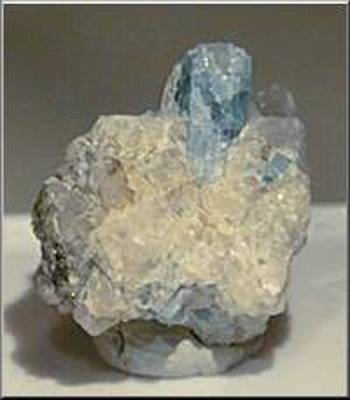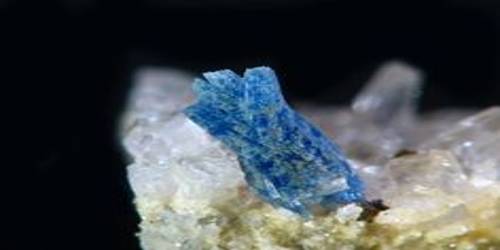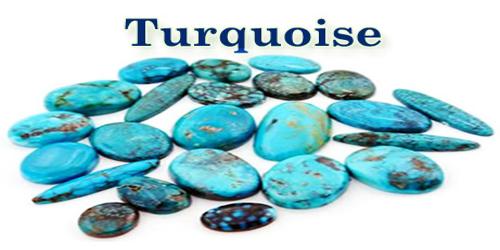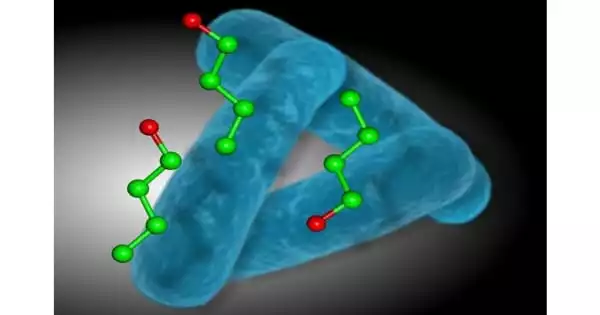Bazzite is a beryllium scandium cyclosilicate mineral with chemical formula: Be3Sc2Si6O18 (Be3(Sc,Fe)2Si6O18 or Be3(Sc, Al)2Si6O18). It crystallizes in the hexagonal crystal system typically as small blue hexagonal crystals up to 2 cm length. It has a Mohs hardness of 6.5-7 and a specific gravity of 2.77 to 2.85. It is hard to distinguish from blue beryl.
Bazzite is named after Alessandro E. Bazzi, who discovered this mineral in Baveno, Italy in 1915. This mineral belongs to the Beryl group as it mostly occurs as deep blue or blue-green color small hexagonal crystals.
General Information
- Category: Cyclosilicate
- Formula: Be3Sc2Si6O18
- Crystal system: Hexagonal
- Crystal class: Dihexagonal dipyramidal (6/mmm).

Properties
Bazzite is identified in the field by its light blue and dark blue variations with indistinct cleavages and brittle fracture. This mineral occurs as symmetrical fine-sized crystals that are formed in the shape of thin prisms. It is semi-transparent with a glassy luster and a light bluish-white streak but without fluorescence. The density of bazzite is 2.8 gm/cm3 with a hardness of 6.5 (approximate to pyrite).
- Color: Light to dark sky-blue, blue-green
- Crystal habit: Aggregates of subparallel prisms
- Cleavage: Indistinct on {0001}
- Fracture: Irregular
- Tenacity: Brittle
- Mohs scale hardness: 6.5 – 7
- Luster: Vitreous
- Streak: Pale bluish white
- Diaphaneity: Semitransparent
- Specific gravity: 2.77 – 2.85
Occurrence
Occurs in miarolitic cavities in granite, in alpine veins and in scandium bearing granitic pegmatites. It occurs associated with quartz, orthoclase, muscovite, laumontite, albite, hematite, calcite, chlorite, fluorite, beryl, and bavenite.
In the past, bazzite has occurred in the miarolitic cavities in granite in Baveno, Italy, in the alpine veins of Switzerland, and in granite pegmatite in Heftetjern, Norway. It is often associated with minerals such as quartz, muscovite, laumontite, orthoclase, albite, hematite, albite, calcite, beryl, chlorite, fluorite, and bavenite.
Information Source:
















